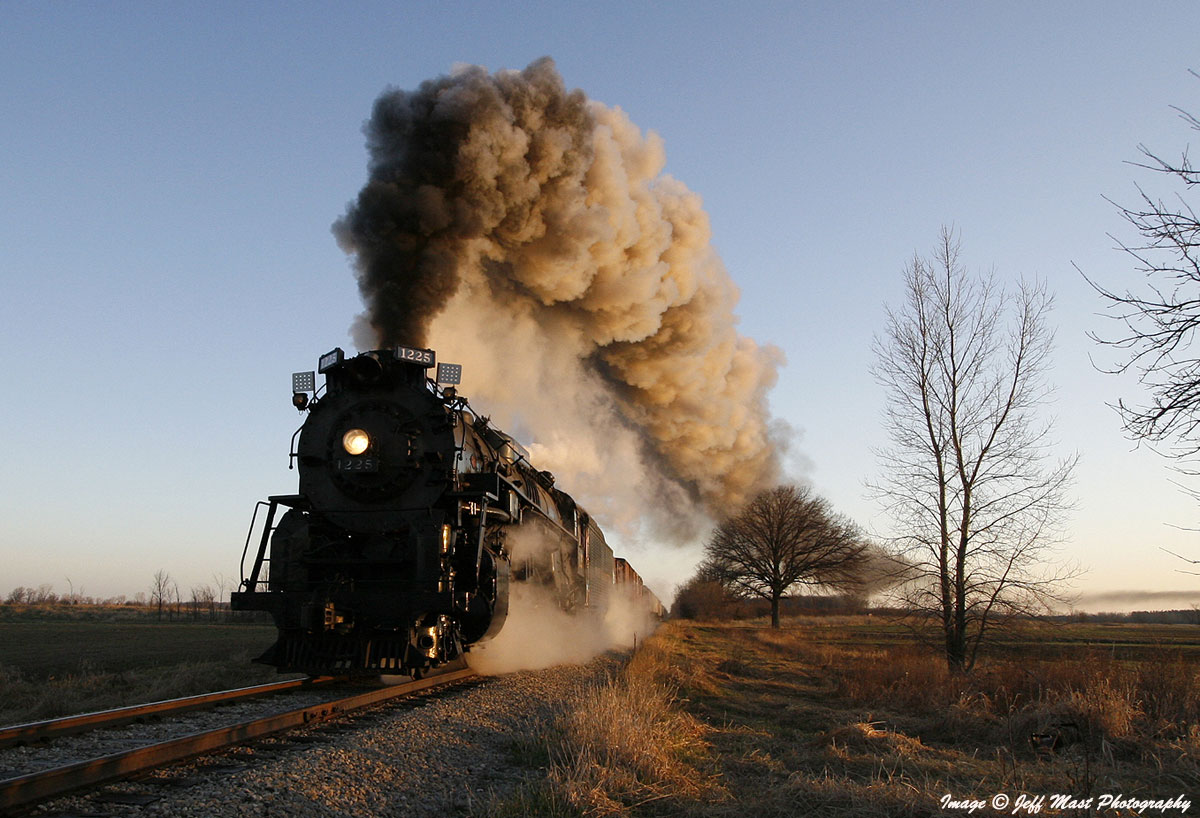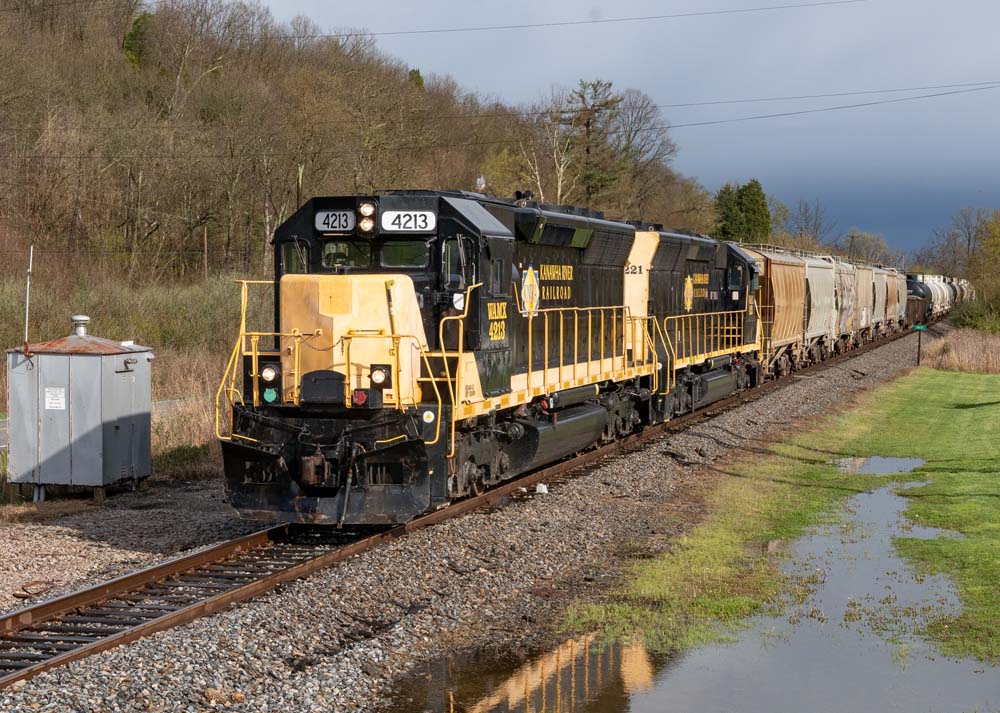
A Pere Marquette 1225 steam locomotive profile is long past due.
Not only is it one of the most active mainline steam locomotives of the past 25 years it is also an iconic symbol of steam’s greatest technological leap forward: the development of Super Power technology, introduced in the 1920s by Lima Locomotive Works of Lima, Ohio. Built in November 1941, Pere Marquette 2-8-4 No. 1225 is now the pride and joy of the Steam Railroading Institute, based in Owosso, Mich. Every time it runs, it exhibits the traits that helped the Super Power concept transform the closing decades of steam.
The 1225 was one of 39 Berkshire-type locomotives fielded by Michigan’s Pere Marquette Railway, a relatively small but heavy-duty railroad serving the state’s vast industrial scene. The PM was owned by the Van Sweringen interests of Cleveland, which also owned the Nickel Plate Road, Erie Railroad, and Chesapeake & Ohio, among others. Together, the Van Sweringen roads developed several specific locomotive designs under the supervision of the company’s Advisory Mechanical Committee. All AMC engines featured the main feature of Super Power: a large firebox supported by a four-wheel trailing truck, capable of generating the volume of steam required for high-speed, high-horsepower operation.
Pere Marquette 1225 details
With its 90-square-foot firebox, its four-wheel trailing truck, and its 69-inch driving wheels, the 1225 easily met the Super Power standard, giving Pere Marquette an opportunity to expand its business by offering faster freight service between Toledo, Ohio; Detroit; Grand Rapids, Michigan; and Chicago. The performance of the PM Berkshires was similar to that of the nearly identical 2-8-4s of the Nickel Plate, famous for transforming the Nickel Plate into an ultra-competitive bridge carrier between Chicago and Buffalo, N.Y.
Pere Marquette bought its Berkshires in three separate classes, the first 15 arriving in 1937 as the N class. The railroad bought 12 more N-1 engines in 1941; this group included the 1225. Finally, in 1944, PM acquired 12 more locomotives in the N-2 class. As it turned out, the PM 2-8-4s had relatively short careers: C&O acquired the PM in 1947 and by late 1951 had dieselized its Michigan subsidiary.
How the 1225 was saved
Most of the Pere Marquette engines ultimately went to scrap, but the 1225 won a reprieve when it was donated in 1957 to Michigan State University and displayed on campus near Spartan Stadium. A second PM Berkshire, 1223, also was saved and displayed at the Michigan State Fairgrounds in Detroit. Today the 1223 resides in a park in Grand Haven, Mich.
The unlikely revival of 1225 began in 1970, when a student organization called the Michigan State University Railroad Club began to tear down and restore the locomotive. The MSU group labored on for several years until the 1225 was conveyed to a new organization called the Michigan State Trust for Railway Preservation, now known as the Steam Railroading Institute. In 1983, the 1225 was moved to Owosso, where the SRI established a headquarters in a former Ann Arbor Railroad Shop. The locomotive ran again under its own power in 1988. In the past 40 years the boiler has been rebuilt three times. In recent years, it received practically an entirely new firebox.
Why 1225 is famous today
The 1225 made a notable movie appearance in 2004, when an animated version of the engine starred in the blockbuster holiday movie “The Polar Express,” based on the popular children’s book by Chris Van Allsburg. A virtual, digital version of the locomotive was created by animators using original PM mechanical drawings, augmented by recordings of the 1225’s actual sounds. Today, the 1225 operates at various times during the year on the tracks of the Great Lakes Central, a short line railroad serving much of the state’s Lower Peninsula. The locomotive’s most popular appearance is the annual series of “North Pole Express” trips in November and December, a nod to the engine’s movie role.















Thank you for the excellent summary!